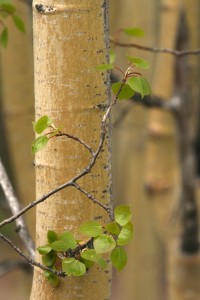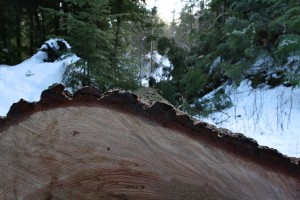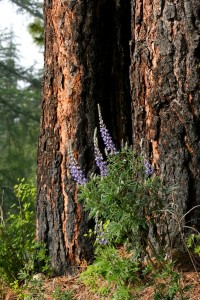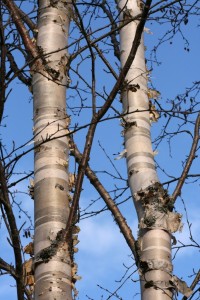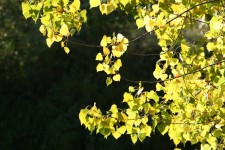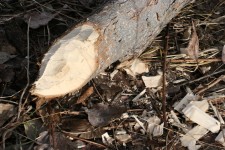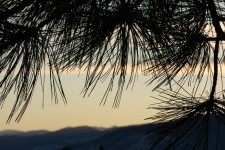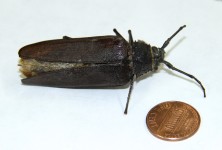Visible everyday, all year long is tree bark. From the white birch bark slowly peeling away from the trunk to the fibrous reddish strips of cedar, bark is as varied as the leaves on the tree.
During winter, bark is one of the few ways to identify a deciduous tree. Identification starts with texture, color and pattern. Unlike leaves, bark can look different with age. For example, trembling (or quaking) aspen has creamy-white bark with black markings after it grows out of its pale green juvenile bark. Then as the tree matures, the older bark at the base of the trunk can turn gray and become heavily fissured.
To understand how bark becomes fissured with age on some trees, we have to go deeper into the tree. When looking at a stump, for example a ponderosa pine, there is a distinct line between the bark and the wood. Typically there is more wood than bark.
When a tree grows, it grows from the cambium layer, which is a very thin layer of cells that encircles the tree between the bark and the wood. The cambium layer produces cells to the inside that creates the sapwood and cells to the outside that create bark.
The cells created to the outside of the cambium layer are phloem cells, which carry nutrients manufactured by the leaves down to the roots. New cells are created each year, which pushes the oldest phloem cells to the outside. The old cells eventually die and don’t transport nutrients.
Holding all the phloem cells in is a layer of cork cambium. The cork cambium makes cork cells to the outside of the tree which is the bark visible on a tree.
As the tree grows in girth, something has to give, especially since there are dead cells that cannot stretch. What gives are the cork cells. As the new growth pushes outward, the cork cells crack and form fissures and ridges. Thus, fissures forms on trees past a certain diameter, which depends on the tree species.
Since the base of the tree is the oldest, it has the thickest bark and biggest fissures. Thick bark is beneficial to trees, particularly those that grow in fire-prone areas. Sequoia have bark that can be two feet thick. Thicker bark often has huge fissures and ridges that creates updrafts which carries heat up and away from the trunk.
Not only does bark provide some fire protection, but also prevents excess water loss, repels insects, and protects the tree from temperature extremes and animals. Part of the bark’s protection comes from the cork. As the cork cells mature they deposit a waxy material called suberin in their walls and die. The suberin helps the bark be waterproof and air-proof.
Some species’s cork cells are so air-proof that the inside of the tree can’t breathe. The cambium layer and the cells it produces need air from the outside for cellular respiration. To counter the airtight bark, the tree creates lenticels, which are the horizontal lines on bark, such as on birch. The lenticels act like windows in the bark, allowing for air exchange.
As a tree matures, the oldest bark can be sloughed off. The ground around the base of a mature ponderosa pine is often covered with puzzle-like pieces of bark sloughed off as the tree grows.
Bark is also harvested off of some trees. The thick outer bark of cork oak is stripped away every decade for commercial uses of cork. Cinnamon sticks are dried, curled up pieces of bark and closer to home is the peeling of birch bark for fire starter.

